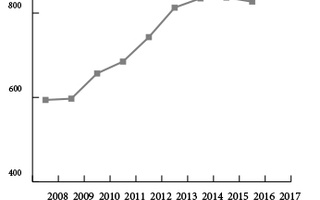{shortcode-46ef0e12de389d75ea161c60d645683d3ba88a25}
More than 35 female faculty at the Graduate School of Design have signed onto a statement in support of student activism in response to a spreadsheet accusing men at the school of engaging in sexual and racial misconduct.
The “Shitty Architecture Men” spreadsheet was an anonymous, publicly available list that named 18 GSD affiliates as perpetrators of misconduct towards school affiliates and others in the architecture world more broadly. The accused range from studio instructors to lecturers to top leaders at the school, including current Design School Dean Mohsen Mostafavi and former chair of the school’s Department of Architecture Iñaki Ábalos.
The spreadsheet also named over 100 architects and academics affiliated with other universities and firms. It is now “temporarily closed,” according to a message posted by the list’s administrators.
In response to the list, individual students and student organizations at the GSD hung banners denouncing sexual misconduct in the school’s main workspace last month and wrote a letter to the school urging administrators to take “concrete” action to prevent sexual misconduct. They have continued to hold meetings with school leaders to discuss harassment at the school and in the field at large.
Since the start of student activism around the issue, the school “made plans” to hire a diversity and inclusion officer, according to an email Mostafavi sent to Design School affiliates in April.
Design School Executive Dean Patricia Roberts first sent the statement by female faculty to GSD students, faculty, and staff on April 23. After a number of female faculty wanted to sign the list, an updated version was sent out May 3.
Female faculty praised students’ efforts in their statement—which they first circulated April 23—and emphasized their support for an issue they said also affects their lives.
“As members of the GSD we, the women faculty, are united in support of the student body in denouncing discrimination, harassment and aggressions against any member of our community,” the statement reads. “We will not tolerate it, we will not stand silent.”
“We do so by acknowledging that we too have suffered and still do from this culture in our own daily encounters, both here and in the broader design community,” the statement continues.
Toshiko Mori, a professor of practice in architecture at the Design School, said female senior and junior faculty members collaborated in writing the statement and circulating it to all female faculty at the GSD.
“It is not really about any accusations or specific issues on the list, but it was very important for us that we help create an environment where students and everybody else feel safe,” Mori said.
Toni L. Griffin, a professor in practice of urban planning, wrote in an email Sunday that faculty “must play” a role in “producing long term change” within the school and the field.
“I helped put together and sign the letter because as leaders within our school and discipline, I felt it was important that we support our students and acknowledge the role we too, as women faculty, must play in advancing an accepting and inclusive environment for all students, faculty and staff through strategies that ultimately produce long term change,” Griffin wrote.
Jennifer R. Bonner, an assistant professor of architecture at the school, said she decided to sign the statement after being “frustrated” at the “Shitty Architecture Men” spreadsheet.
“I had reviewed it and got pretty frustrated after seeing two hundred odd men's names on it, many my colleagues at the GSD,” Bonner said. “I am very proud of our students who have really taken the lead and taken charge in demanding action and so for me, this is the very minimum we could do in support of our student body who is really leading the charge.”
Bonner also said the “Shitty Architecture Men” spreadsheet did not come as a surprise to her, since she had previously heard stories of misconduct by men listed on the sheet.
“A lot of the names on the list are people we have heard things about in the past,” Bonner said. “It was shocking just to see it all collected in one place.”
Lily Song, a lecturer in urban planning and design, said she signed the statement because she wanted ensure students knew that incidents they have may have experienced with male professors and administrators at the school were not “isolated.”
“I also wanted them to know that those are not isolated incidents that students suffer but that women faculty are also dismissed and disrespected and denigrated regularly in subtle but also very overt ways,” Song said.
A Design School spokesperson did not respond to requests for comment.
Diane E. Davis, chair of the department of urban planning and design, wrote in an email Sunday that she was “empowered” by the faculty statement and hopes to continue working on improving conditions at the GSD and the design field.
“Just the mere act of coming together as women faculty to discuss the possibility of articulating a response, and our subsequent collective efforts have been very empowering,” Davis wrote. “I very much look forward to further efforts to deepen the school’s commitment to alleviating gender improprieties, among other pressing concerns about the work and practice environment which deeply affect us all.”
—Staff writer Alexandra A. Chaidez can be reached at alexandra.chaidez@thecrimson.com. Follow her on Twitter @a_achaidez.
Recommended Articles
-
GSD Students, Faculty Urge Reform of Priorities To Make Design More Relevant to Urban NeedsA statement distributed at Saturday's ground-breaking exercises for George Gund Hall, the new Graduate School of Design headquarters, called for
-
 Intelligent Design: Negotiating the Identity of the Architecture Track
Intelligent Design: Negotiating the Identity of the Architecture Track -
 Calvin Klein Shares Perspective on Design at GSD
Calvin Klein Shares Perspective on Design at GSD -
 Design School Building Draws Praise, Except For the Desk Space
Design School Building Draws Praise, Except For the Desk Space -
 Graduate School of Design's Enrollment Soars Skyward
Graduate School of Design's Enrollment Soars Skyward













